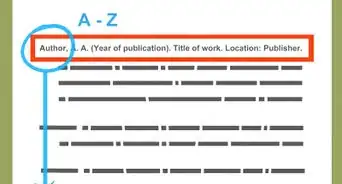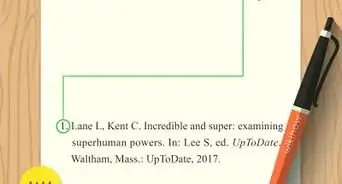This article was co-authored by Christopher Taylor, PhD. Christopher Taylor is an Adjunct Assistant Professor of English at Austin Community College in Texas. He received his PhD in English Literature and Medieval Studies from the University of Texas at Austin in 2014.
There are 9 references cited in this article, which can be found at the bottom of the page.
This article has been viewed 337,604 times.
Quoting something in an essay is easy, but quoting a quote (also known as a nested quotation) can be a bit trickier. Thankfully, there are a number of simple grammar rules you can learn to help you reference indirect quotes properly.
Steps
Quoting the Secondary Source and the Indirect Quote
-
1Select the portion of the secondary source that you want to quote. The secondary source includes quote that you want to use. This is also known as the indirect quote. If you are going to include some of the secondary source’s writing, choose the most important segment that makes a dynamic comment about the indirect quote.[1]
-
2Introduce the secondary source quote in your writing. Before quoting the secondary source’s passage, introduce the author.[2]
- For example, write: According to Hoffman…
Advertisement -
3Use double quotation marks around the secondary source’s passage. Indicate the secondary source using double quotation marks.
-
4Use single quotation marks around the quoted portion. Within in the secondary source’s passage, there will be quotation marks that indicate the quoted portion. Use single quotation marks to identify this portion.[3]
- For example: According to Hoffman, “Roberts indicates that ‘new research confirms past theories,’ but he fails to point out that new research does not measure the same indicators.”
-
5Add a parenthetical citation. Add a citation for the secondary source after the author’s last name.[4]
- If you’re using the American Psychological Association (APA) citation style, include the source publication year after the author’s name. Add the page number at the end of the quote. For example: According to Hoffman (2010), “Roberts indicates that ‘new research confirms past theories,’ but he fails to point out that new research does not measure the same indicators” (p. 103).
- If you’re using the Modern Language Association (MLA) citation style, add the page number after the author’s name. For example: According to Hoffman (103), “Roberts indicates that ‘new research confirms past theories,’ but he fails to point out that new research does not measure the same indicators.”
-
6Add an entry on your works cited list. A works cited list is a list that appears at the end of your paper. This list will contain every source for which you’ve included parenthetical citations in the body of your paper. In the case of using an indirect quote, only list the secondary source on your works cited list.[5]
- For APA style, write: Hoffman, S. (2010). Book title. City of publication: Publisher.
- For MLA style, write: Hoffman, Samuel. Book Title. City of publication: Publisher, 2010.
Quoting the Indirect Quote Only
-
1Select the portion of the original quote. Choose part or all of the original quote that is used in a secondary source. This is called the indirect quote.
-
2Introduce the indirect quote into your writing. Give the reader some context for the quote that you are including. Refer to the author of the original quote.[6]
- For example, write: Roberts notes…
-
3Put double quotation marks around the indirect quote. Set the indirect quote apart with quotation marks.
- For example, write: Roberts notes, “New research confirms past theories”
-
4Add a parenthetical citation at the end of the sentence. If you haven’t consulted the original source for this indirect quote, then you need to include a citation of the source where you found the indirect quote. Place a period after this parenthetical citation. Use “as quoted in,” since you are using the actual quotation from the secondary source.[7]
-
5Add an entry on your works cited list. A works cited list is a list that appears at the end of your paper. This list will contain every source for which you’ve included parenthetical citations in the body of your paper. In the case of using an indirect quote, only list the secondary source on your works cited list.
- For APA style, write: Hoffman, S. (2010). Book title. City of publication: Publisher.
- For MLA style, write: Hoffman, Samuel. Book Title. City of publication: Publisher, 2010.
Paraphrasing the Quote
-
1Restate the indirect quote in your own words. Paraphrasing is the process of using your own words to restate what someone else has written. Referring only to the indirect quote, use different words to convey the quote’s meaning. Include the indirect quote’s author in this paraphrased section.
- For example, write: Roberts claims that new studies have been able to substantiate previous research.
-
2Do not add quotation marks to the paraphrased quote. Since you are using your own words, you don’t need any quotation marks.
-
3Add a parenthetical citation for the secondary source. Even though you have paraphrased, you still must add a citation to indicate where you got this quote from. After the paraphrased section that you have used, include a reference to the secondary source where you found the quote. Use “as cited in,” since you are referring to the citation from the secondary source.[10]
- For example: Roberts claims that new studies have been able to substantiate previous research (as cited in Hoffman, 2010, p. 103).
-
4Add an entry on your works cited list. A works cited list is a list that appears at the end of your paper. This list will contain every source for which you’ve included parenthetical citations in the body of your paper. In the case of using an indirect quote, only list the secondary source on your works cited list.
- For APA style, write: Hoffman, S. (2010). Book title. City of publication: Publisher.
- For MLA style, write: Hoffman, Samuel. Book Title. City of publication: Publisher, 2010.
Tracking Down the Original Passage
-
1Find the quote in the original work. You should make an effort to track down the original work when you want to quote a passage that someone also quoted. Use the citation in your secondary source to locate the original work. This is the best option, especially for getting the grammar right and ensuring that the quote is accurate.
-
2Read the full quote in context. When you locate the original source material, find the quote you’re looking for. Read the full sentence from which it comes, as well as the surrounding text.
- It may be the case that the quoted material was taken out of context in the secondary source. Read the full passage to understand the original author’s meaning.[11]
- Reading the quote in the original will also enrich your own research and writing, as you will become more aware of and immersed in the historiography of your subject area’s literature.
-
3Understand the secondary author’s interpretation. The secondary author uses a particular quote to support her argument. Reading the original work will help you understand how the secondary author is using a particular passage to add something to her argument.
-
4Quote the original passage. Select the part of the work that you would like to quote in your own writing. There is no need to reference the secondary source, although you might choose to refer to the secondary source’s interpretation as part of building your argument.
- Be sure to use a proper citation for this quote, and include it on a reference list.
Community Q&A
-
QuestionHow do I punctuate a direct quote within a long, indented (5 or more lines) quote? There are no quotation marks used outside the long, indented quote. The indentions indicate that it is quoted.
 Community AnswerUse single quotation marks around any quote within a quote, or you can also use italics, depending on the citation format and what seems most appropriate.
Community AnswerUse single quotation marks around any quote within a quote, or you can also use italics, depending on the citation format and what seems most appropriate. -
QuestionA quote I have has a quote in it but that second quote has a quote that has the single quote marks already around it so what might I do?
 Community AnswerUse regular quotation marks around the entire quotation and then use single quotes for the quote within the quote AND for the part within that quote that already has already single quote marks.
Community AnswerUse regular quotation marks around the entire quotation and then use single quotes for the quote within the quote AND for the part within that quote that already has already single quote marks.
References
- ↑ https://morningside.libguides.com/APA7/secondary_sources
- ↑ https://libanswers.snhu.edu/faq/120545
- ↑ https://apastyle.apa.org/style-grammar-guidelines/citations/secondary-sources
- ↑ https://morningside.libguides.com/APA7/secondary_sources
- ↑ https://owl.purdue.edu/owl/research_and_citation/mla_style/mla_formatting_and_style_guide/mla_works_cited_page_basic_format.html
- ↑ https://camosun.libguides.com/c.php?g=663851&p=4665601
- ↑ https://research.wou.edu/c.php?g=1046948&p=7596966
- ↑ http://umanitoba.ca/student/academiclearning/media/Citing_Secondary_or_Indirect_Sources_REVISED_2014.pdf
- ↑ http://umanitoba.ca/student/academiclearning/media/Citing_Secondary_or_Indirect_Sources_REVISED_2014.pdf
About This Article
To quote a quote, place double quotation marks around the overall passage and single quotation marks around the text the author is quoting. For example, you would write: According to Hoffman, “Roberts indicates that ‘new research confirms past theories,’ but he fails to point out that new research does not measure the same indicators.” For tips on how to paraphrase a quote, find source materials, or create citations, read on!




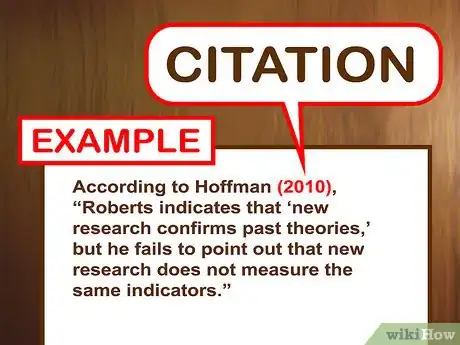
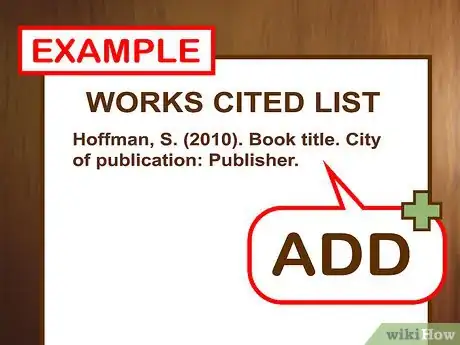



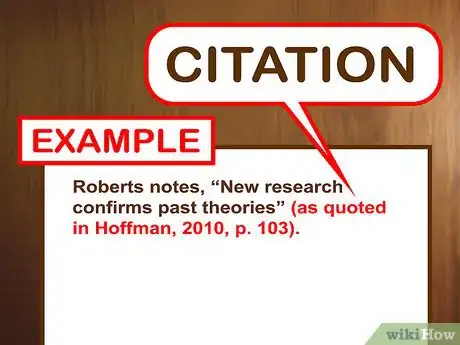
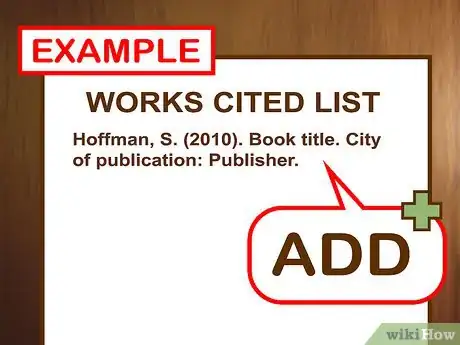


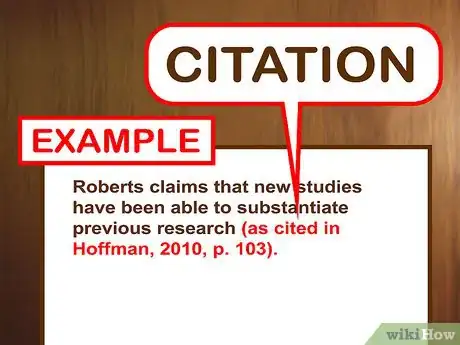
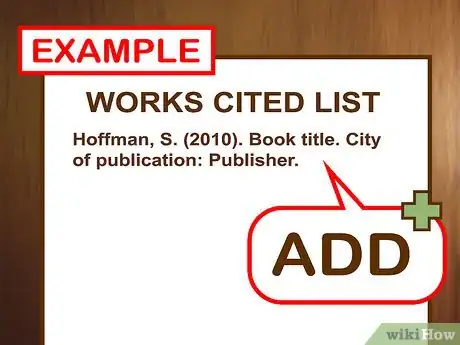









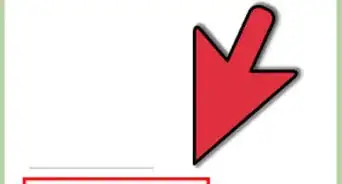

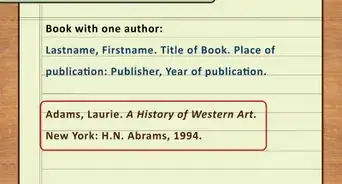


-Step-18.webp)

